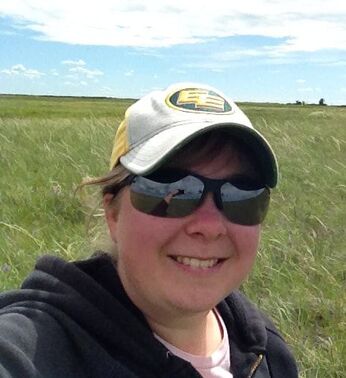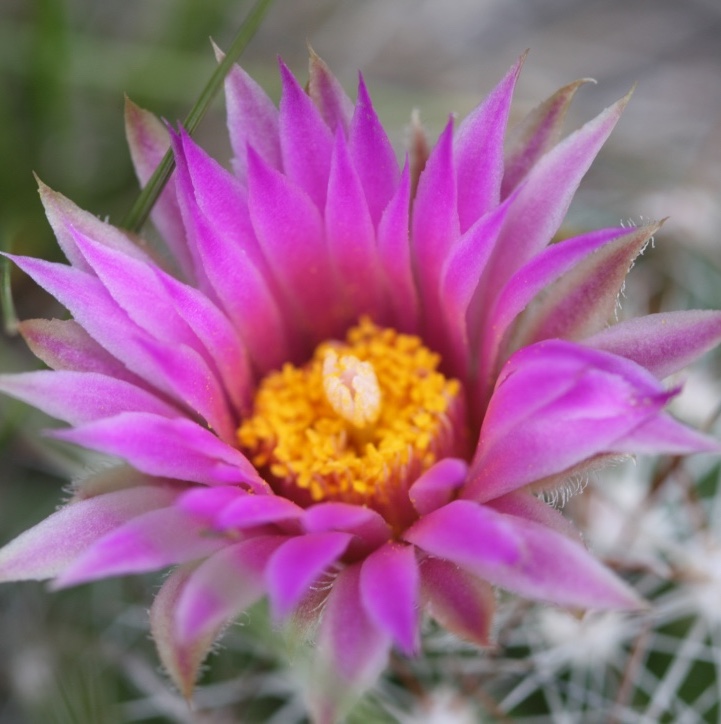About
About & Using This SiteVision & Mission Statement of Project: Plant ID, Alberta
Project: Plant ID, Alberta, is a continuous, life-long project. It is intended to be a photographic information resource on the thousands of species of rangeland plants I have found in Western Canada, predominantly in the province of Alberta.
My mission is to provide a comprehensive information resource for Western Canadians on various native and non-native plants, from noxious weeds to edible plants, of different ecoregions and ecologies found in my travels.

Prairie Crocus (Pulsatilla nuttalliana).
About Project: Plant Identification, Alberta
There are over 2,000 species of vascular plants in Alberta. As of today, I have found and photographed perhaps less than a quarter of that. Fortunately, the more places I visit, the more opportunities I get to photograph species I’ve not seen before. These eventually find their way here.
NOTE: This is not a garden/ornamental plant identification website.
All plants included here are those that may be found in rural, agricultural, or wilderness areas.
However, this site is also not solely exclusive to native Western Canadian species. I have included various non-native species, both prohibited noxious or potentially invasive weeds, such as Scentless Chamomile (Tripleurospermum inodorum), plus important forage species for livestock, like Smooth Bromegrass (Bromus inermis). I find it very important to include such species to raise awareness of their potential threat to the ecological integrity of many natural areas. I also consider it important to highlight those species that are important food and medicinal resources for various animals, from domesticated and wild herbivores (cattle and deer, respectively) to civilized hominid omnivores (humans). Most species included here are considered “commonly found” in one or more ecoregions; few are rare. I include rare species on the occasions that I find them.
A dichotomy key is not included in this site. Various species of many taxonomic families are being added continuously, requiring extra time and effort to ensure the dichotomy key is regularly updated. I suggest finding completed dichotomy keys in the links and books found on the Resources page.
(If I were to recommend an excellent dichotomy key book in the here and now, it would be Vascular Plants of Alberta: An Illustrated Guide (© 2020) by L. Kershaw and L. Allen. It is a highly recommended resource!)

Yellow Lady-slipper Orchid (Cypripedium parviflorum).
How to Use This Site
Unless otherwise noted, the following sections for each species will assist you in identifying the species of interest, discovering what ecoregions and plant communities they are found in, and mentioning additional information such as forage value, medicinal or toxic properties, and reclamation services.
Identification: Dividing Vegetation Types into Respective Pages
Three primary vegetation types exist which I separated into their respective pages:
Their species are organized in three ways:
- Major groups (i.e. Dicots or Monocots for forbs and grasses, or Angiospermae or Gymnospermae in trees and shrubs), which group taxonomic families into how their respective species germinate and what kind of fruits they produce. For instance, “dicots” (Dicotyledon) have two seed leaves per seed, and “monocots” (Monocotyledon) has only one leaf per seed. Angiosperms produce flowers and fruit, whereas Gymnosperms produce naked seeds in cones.
- Taxonomic family name (i.e. Asteraceae or Aster Family) or Taxonomic tribe name (i.e., Triticeae or Wheatgrass tribe), reserved only for grasses.
- Flower colour, which is exclusive to and a major feature of identifying forbs. It is difficult to use this with grasses, grass-likes, and trees because the flower colour is consistently green or brown. There also are too few species of shrubs to be able to justify dividing them into flower colour compared with taxonomic family names.
Each page has various galleries of photographs to pour through. As you hover your mouse over each photo (or tap a photo on your mobile device), you will notice that each photograph is captioned with common and scientific names.
**Clicking or tapping on the nameplate beneath each photo will bring you to another page containing information about that selected species.
For each of the vegetation-type pages, morphological characteristic drawings are provided to help you see the different features commonly used to identify a species. The drawings are all by my own hand (no tracing involved) and derived from Budd’s Flora book (see Resources).
**If you see an asterisk (*) on the nameplate below a captioned photo, this means I am working on that respective information page, which is currently inaccessible. Thus, nothing will happen if you tap or click on the nameplate. I highly recommend checking back regularly, as new species and information are regularly added!

Blue-eyed Grass (Sisyrinchium montanum) with a Hover Fly visitor.
Species Information Pages
Digital photography is a highly practical tool I like to use to help identify plants. Illustrating the various key features of a species is the fundamental aspect of this site. Unless otherwise noted, all of the photographs used on this site are mine.
Each species has a page that is laid out as follows:
Synonyms or Other Names:
Many species have more than one common or scientific name they are known by. This may or may not help with properly identifying a species.
Origin & Status:
Where does this species come from? Is it native or non-native? If it is non-native, where is its origin? Non-native species may be harmless and naturalized or considered by municipal or provincial weed specialists as noxious, invasive, or prohibited noxious. This section also tells you if this plant is common, rare, threatened, or endangered.
Notable Features to Identify:
This section briefly notes the most notable characteristics of this plant. We go from big to small, from observing the plant in its habitat to where your hand lens may be needed. For example, we would note growth stature first before zooming in to discuss the shape and structure of the leaves.
Botany terms can be tricky to understand. I consider simplifying such terms to make them easier for you to understand, but only enough so that sufficient detail is still available to distinguish from other species effectively. Italicized or bold font is also utilized to emphasize the key identifying features. The Botanizing Glossary contains the terms used on this site.
Where and When to Find This Plant:
This section tells you what ecoregion[s], habitats, and plant communities (if applicable) you should expect to find this plant in.
Trees, shrubs, grasses, and grass-likes are often classified into one or two plant communities. (There are always exceptions!) Many of these types are notable dominant species in their community that are worth mentioning.
On the other hand, many forbs are highly adaptable and can fit into several different ecosystems. I find it challenging to place them in just one specific plant community. So, rather than give you a big list of what communities to see it in, general habitat is easier (and simpler) to mention. This is mainly because they usually don’t stand as a dominating species in the landscape (if they are dominating over other species, they are invasive, noxious weeds). Instead, they serve best as indicators of soil health, soil type, and moisture conditions that make their growth and reproduction favourable.
Additionally, all plants bloom at a favourable time of year. I note the months and seasons during which you can expect to find these plants in bloom. (Note that this applies only to Western Canada. I cannot specify what time of year this species will bloom in other parts of the world, if applicable.)
Is This Species Edible, Medicinal, or Toxic?
Here, I discuss the properties of this species that make it edible, medicinal, or toxic, as well as its known cultural value to indigenous peoples. The details I share depend on what information I have access to. That said, I provide a discretionary notice that foraging for this species is illegal in most provincially protected natural areas, and parks are outright discouraged due to its status as an uncommon or rare species.
Many forb species have toxic properties that will also be discussed and emphasized in this section.
What Other Species Can This Be Confused With?
It’s easy to confuse one species with another. This section identifies other species that may look similar to this plant and the key characteristics that will help differentiate them from the plant.
Other Interesting Information:
This section covers other information not mentioned above. For some species, this may include topics such as use for wildlife and livestock and its value in land reclamation. Others may include superstitions and short stories about this species or how naturalists came up with its name. Still, other topics could include what type of soil issues it may tell us or how and why it’s considered a noxious weed. Who knows what I find and share!
The Photo Gallery:
Here is where I share more photos I have taken of this plant. Notes of what I have observed when taking this photo–or why I chose to take it in the first place–may be included.

Karin Lindquist
Founder/Author
Karin grew up on a family farm where cattle, the pasture, and surrounding native ecological areas were her favourite places to explore. She is an avid self-taught photographer passionate about plants and rangelands. She holds a Bachelor of Science in Agriculture (Animal Science Major) from the University of Alberta. Part of her studies included range science and plant identification. She previously worked with the University of Alberta’s Rangeland Research Institute in helping graduate students with studies that involved plant ID and range health assessments. Karin worked as a forage-beef specialist extension consultant with Alberta Agriculture & Forestry at the Ag-Info Centre for over four years. She advised farmers and other industry people there on plant identification and forage species management. She currently lives in Central Alberta.
